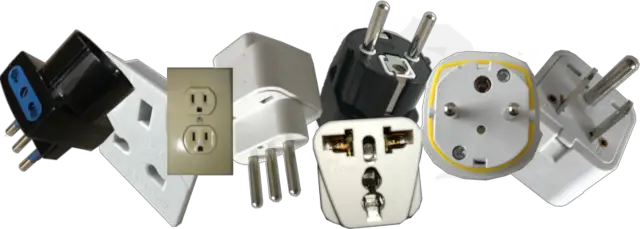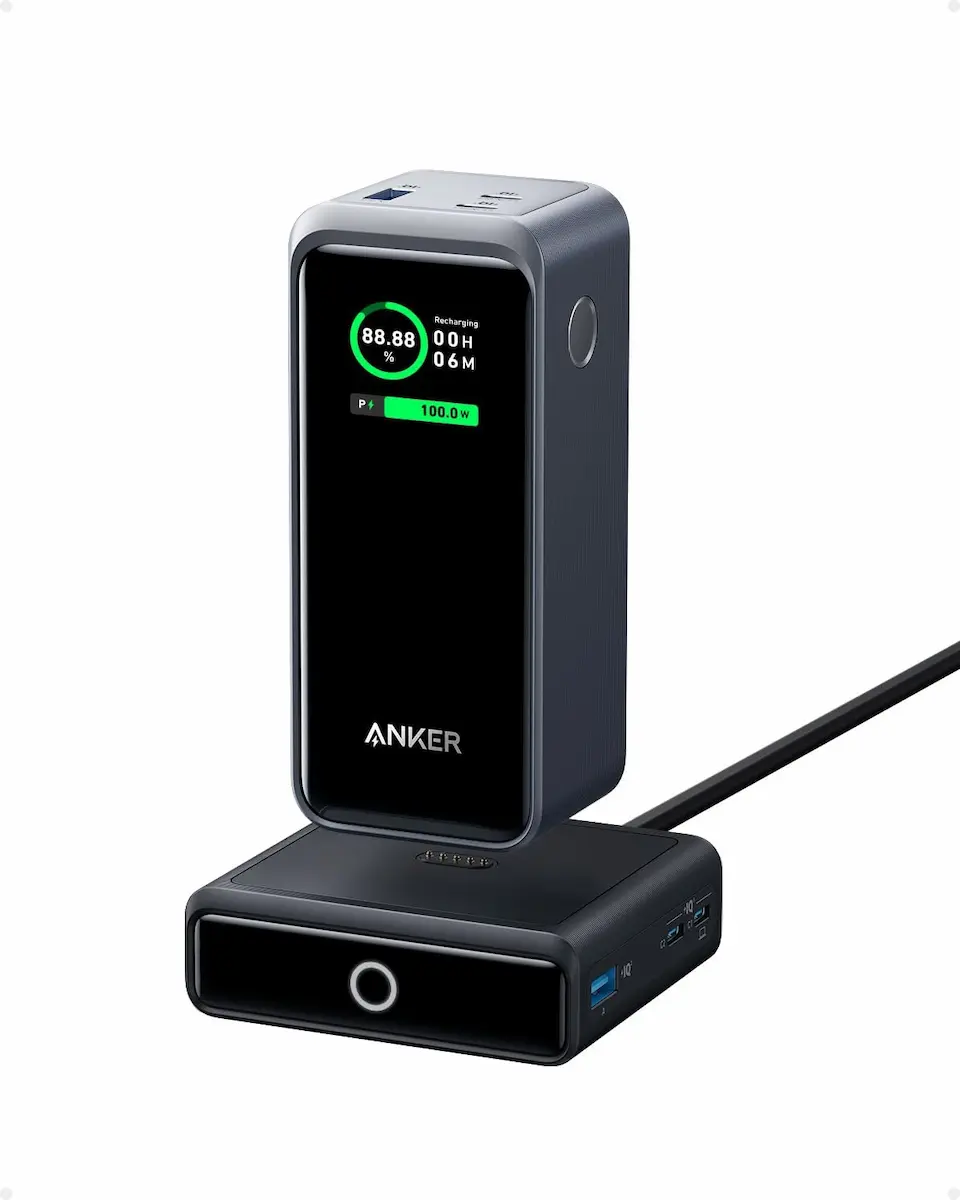Never be left powerless on your travels again! Learn the ins and outs of international plug types, voltage, and the must-have adapters for any digital nomad.
Taylor Watts - January 04, 2024
 Digital Nomad
Digital Nomad
Discover the secrets to keeping your devices charged in any corner of the globe with our comprehensive guide to travel adapters and power management for the tech-savvy traveler.
Traveling With Tech: A Digital Nomad's Guide to Power Plugs 🌍💻
Hello there, my fellow globetrotters and tech enthusiasts! 👋 It's Taylor Watts here, all excited to unravel the electrifying maze of travel adapters, power plugs, and how to keep our beloved devices juiced up while we trot around the globe. We've all had that moment of panic when our phone is at 2% and there's nowhere to charge. Total nightmare, right? 🤦♀️ As a seasoned globe-trotter myself, I'm here to help you avoid exactly these kinds of tech-travelling calamities!
🔌 Understanding the World of Plugs and Voltages
Before you dash off to paradise, let's talk power basics. Did you know that not all countries use the same type of socket? Yep, it's not just currencies and languages that change across borders.
The First Rule of Tech Travel is: Know thy destination's plug and voltage situation! Most of the world runs on two voltage ranges - 100-127V (found in North and Central America, Japan, etc.) and 220-240V (Europe, Australia, most of Asia, Africa). Why should you care? Because plugging your gadget into the wrong voltage can turn it into a pricey paperweight.
Oh, and when it comes to plug types, think of them like a global puzzle - there's a dizzying array of shapes and sizes out there! From the flat prongs of Type A in the US, to the round ones of Type C in Europe, and the chunky three-pinned Type G in the UK, the variations are mind-boggling.
🌐 The Digital Nomad’s Toolbox: What to Pack
Packing smart is an art form, and for digital nomads, it's essential to have a travel-friendly tech kit. Here's a Techie Travel Checklist:
Universal Travel Adapter: Invest in a multi-region, all-in-one adapter that can wrangle with any socket type. It should cover most plug types - A, B, C, E/F, G, I, etc. - simplifying your life tremendously.
Portable Power Bank: This little lifesaver can bail you out of battery woes and is perfect for long flights or day trips when wall sockets are a myth.
Voltage Converter or Transformer: For those doohickeys that can't handle dual voltage, a converter or transformer is your knight in shining armor.
Multiple-Port USB Charger: Reduce the number of wall chargers by bringing one that can refuel several devices at once. Efficiency for the win!
Charging Cables and Cord Organizer: Pack extra cables (trust me on this) and use a cord organizer to keep everything untangled and in order.
Surge Protector: It defends your precious gadgets against unexpected spikes in power – kind of like a techie bodyguard.
💡 The Bright Spark's Tips on Adapters and Converters
Alright, folks! Let's dive a bit deeper into the electrifying details (pun intended 😉).
✨ Adapters Do Not Convert Voltage Yes, they let you plug into the wall, but they don't change the electricity itself. If you plug your 110V hairdryer into a 220V socket with just an adapter, you might witness an unintended fireworks show. 🎆
✨ Check Your Devices for Dual Voltage Many modern devices like laptops, phones, and tablets are dual-voltage, meaning they work on both 110V-240V. Check the fine print on the power adapter or device to be sure.
✨ When to Use a Converter or a Transformer - Converters work with simple, non-digital electronics, usually just for short periods. Ideal for things like basic hair dryers or irons. - Transformers are for your more sensitive electronics and can be used for longer periods. This might apply to certain medical devices or specialized tools.
✨ No Single Adapter is Truly Universal Despite what the labels say, no adapter covers every country. However, multi-region adapters should suffice for most of your journeys. For peace of mind, visit whatplug.info to check the specific plug type used in your destination country!
🛫 Prepare for Takeoff: Checklist Before You Fly
Make sure you don't leave home without double-checking these:
- Gadget Compatibility: Confirm that all your devices are dual-voltage.
- Right Adapter: Pack the correct plug adapter for your destination.
- Backup Plan: Have an extra travel adapter and charger – just in case one goes AWOL.
☀️ Embracing the Sun: The Role of Solar Power
In a world mindful of sustainability, solar chargers have entered the chat. Harnessing the power of the sun, you can charge your devices simply by basking in the daylight - making it a perfect companion for remote adventures or eco-friendly travellers. With solar power, you're not just embracing the wanderlust life; you're giving Mother Earth a high-five! 🌿🤝
🚩 Red Flags to Watch Out For
Be cautious, savvy nomads. Here are some potential hiccups:
- Different Hertz: Besides voltage, the frequency of electrical current (Hertz) varies. Most electronics can handle the 50-60Hz range, but confirm this, especially with clocks and devices with motors.
- Loose Connections: Some adapters don't fit snugly. Using a power strip as an intermediary can sometimes offer a tighter fit.
- Cheap Knockoffs: Don't skimp on quality for adapters and converters. Low-grade options can damage your devices or, worse, be hazardous.
❗ Essential Safety Advice ❗
When it comes to electricity, safety is no joking matter. Even though I'm all for keeping it light and fun, these tips are serious:
- Avoid Overloading: Don't piggyback multiple adapters or plug a power strip into a travel adapter.
- Keep an Eye Out: If your device heats up or makes a humming sound, unplug it immediately.
- Dry Hands: Always handle plugs and sockets with dry hands. (Basic, but easy to forget!)
⚡ After the Spark: Post-Trip Tech Care
Once you're back from your escapades, it's a good idea to give your gear a little TLC:
- Inspect Adapters: Check for any wear and tear.
- Stay Organized: Keep your travel tech gear together so it's ready for your next adventure.
- Review and Reflect: Jot down any power struggles you faced and prepare better for next time.
🎒 To Sum It Up: Stay Charged and Ready!
You've got the power...know-how, that is! 🎉 By understanding plug types, voltages, and the gear you need, you'll keep your devices safe and powered up, ready to tackle your work or capture those perfect travel memories.
Remember, every trip is a chance to learn and improve your travel tech strategies. So pack wisely, travel safely, and stay electrifyingly adventurous!
Until next time, may your connections be secure and your batteries full! Bon voyage! ✈️🔋
Cheers, Taylor Watts 🦋
↬ a link from your website helps too.

